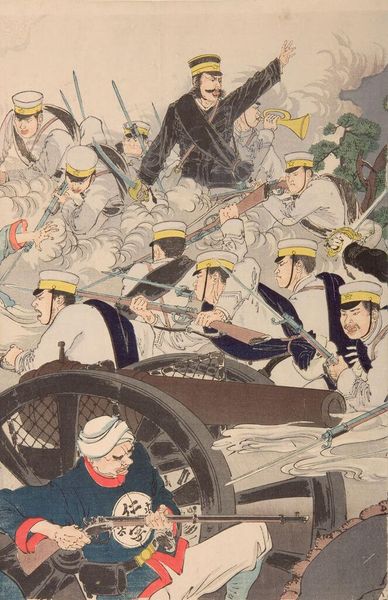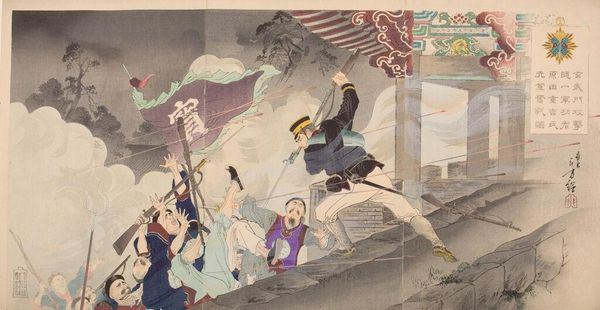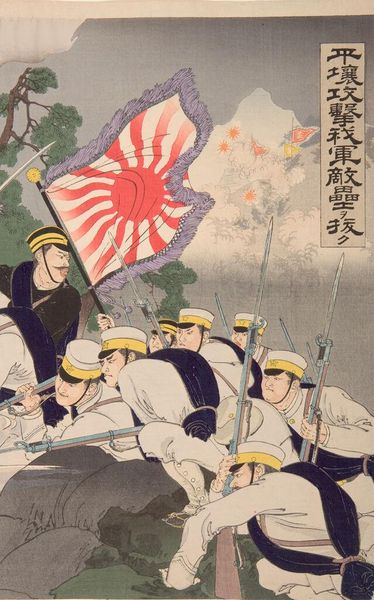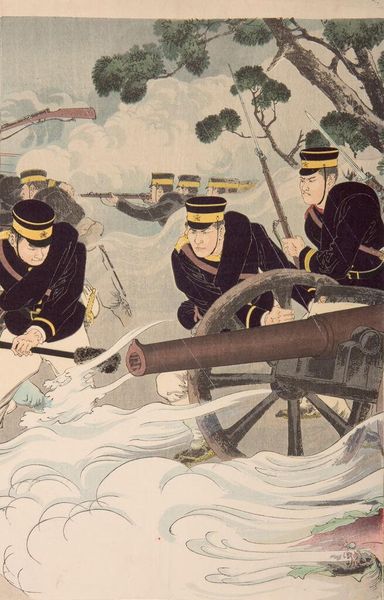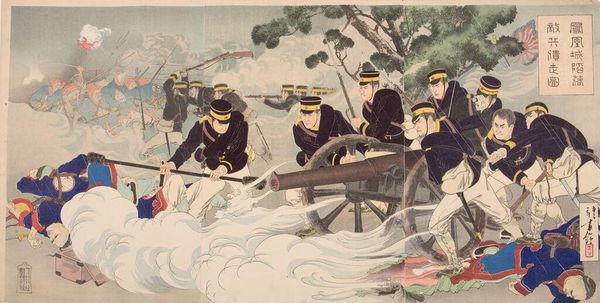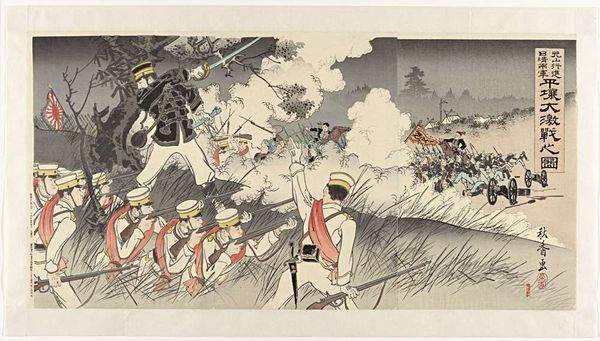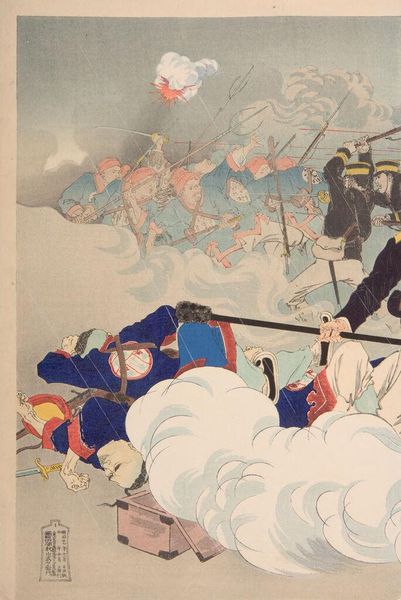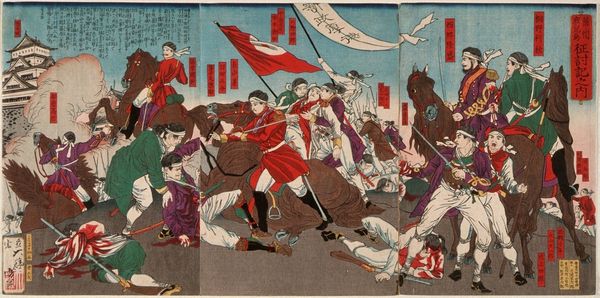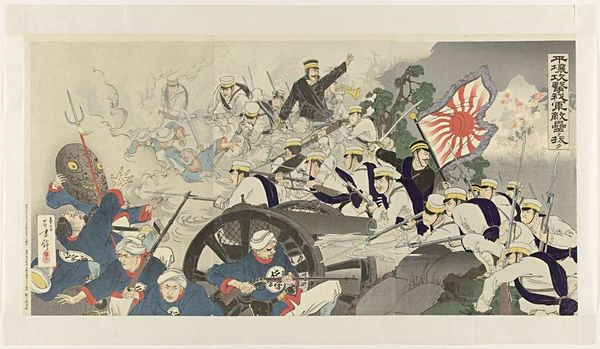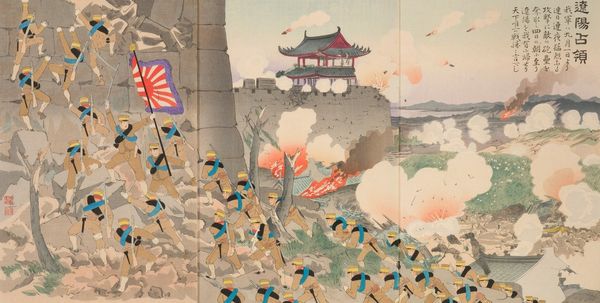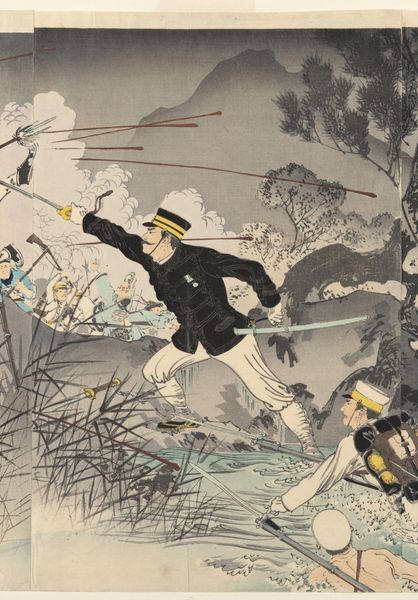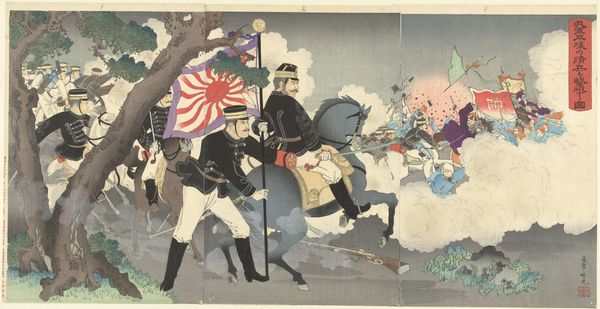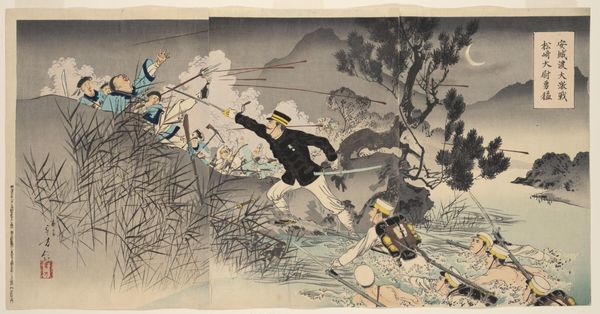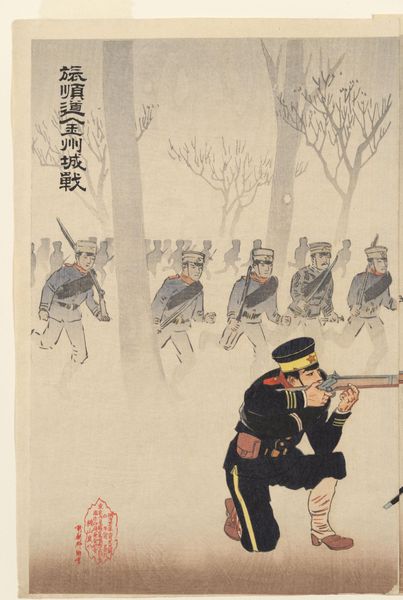
Attacking Pyongyang, Our Soldiers Conquer the Enemy Fortress (HeijÅ kÅgeki waga gun tekirui o nuku) Possibly 1894
0:00
0:00
Dimensions: overall for matted triptych: H. 37.6 x W. 73.2 cm (14 13/16 x 28 13/16 in.)
Copyright: CC0 1.0
Editor: This triptych, "Attacking Pyongyang, Our Soldiers Conquer the Enemy Fortress" by Mizuno Toshikata, depicts a battle scene. It's chaotic, with so many figures in motion. What strikes you most about this work? Curator: This print is more than just a battle scene; it's a potent piece of propaganda. Consider the historical context: it likely celebrates a Japanese victory during the Sino-Japanese War. Notice how the Japanese soldiers are depicted as organized and modern, while their enemies are almost caricatured. What does that tell us about the artist's intent, and the intended audience? Editor: I see what you mean. It’s definitely portraying a specific, biased narrative. So, it’s not just about documenting history but shaping it? Curator: Precisely. By examining the visual language and the historical context, we can unpack the power dynamics at play and understand how art can be used to construct and reinforce national identity and justify military action. Editor: That's fascinating. I'll definitely look at historical art with a more critical eye now. Curator: Remember, art doesn't exist in a vacuum; it's a reflection of, and a contributor to, the complex social and political landscape.
Comments
No comments
Be the first to comment and join the conversation on the ultimate creative platform.
